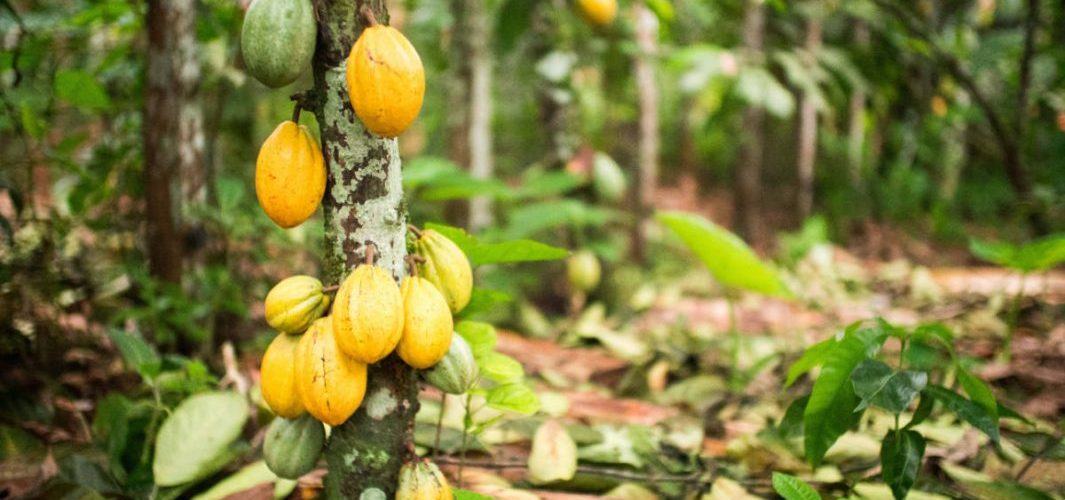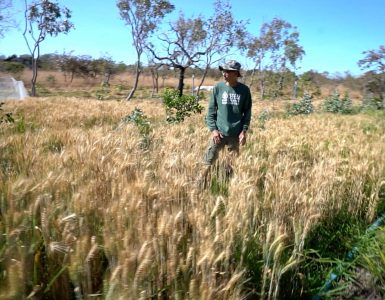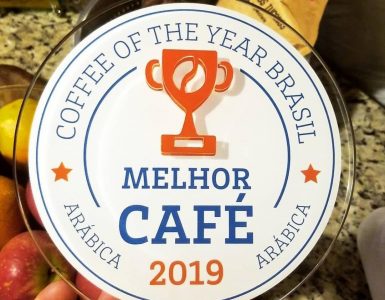According to Ernst Götsch, pruning is the fuel of transformations and the key to the acceleration of natural succession. In Syntropic Agriculture’s view, the role of the human being on the planet would be, like any other species, to manage ecosystems to favor life dynamics towards complexification through symbiotic relationships with other organisms. From this perspective, the syntropic farmer would be able to support the primary production of biomass by pruning the species according to criteria such as stratification, life cycle, and place in succession. It seeks to create an environment of constant cycling and increase of organic and inorganic nutrients, maximizing photosynthesis and accelerating the system’s ability to metabolize and convert energy into more complex forms of life.
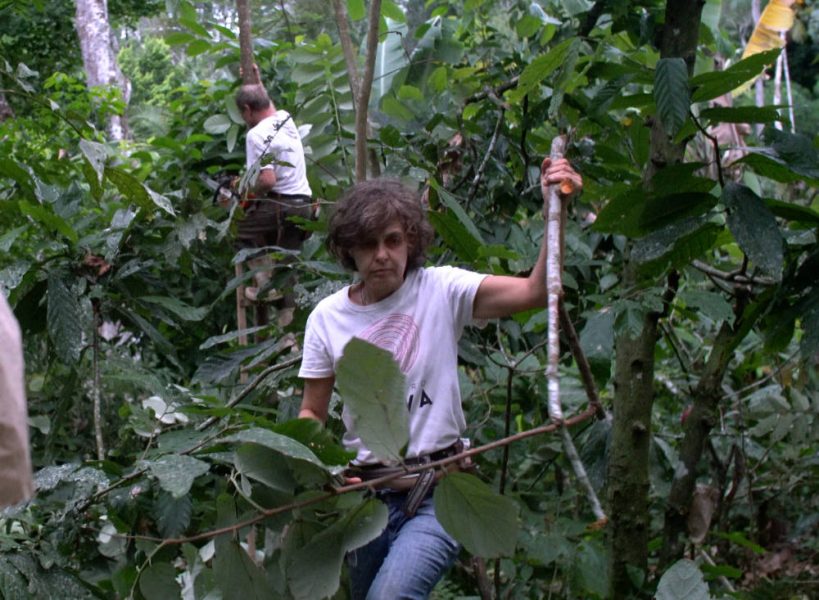
Ernst Götsch tells us an instructive example that facilitates understanding of the role of pruning in natural ecosystems and refers to traditional indigenous knowledge of the Amazonian region of Upper Beni, Bolivia, where cacao (Theobroma cacao) is native. Still living on hunting and gathering, the natives developed other perceptions about the behavior of species that are useful to them, thus constructing criteria for identifying highly productive individuals and some relevant relationships with their environment. In these places, cocoa occurs preferentially on the banks of rivers and wind channels, areas that are periodically subjected to disturbances, either by the fluvial flood pulses or by the strong winds that usually strike the Andes valleys. The natives of that region reported to Ernst that every four years the wind is exceptionally powerful and that results in great disturbances. According to their reports, those are also the years of greater production of cacao.
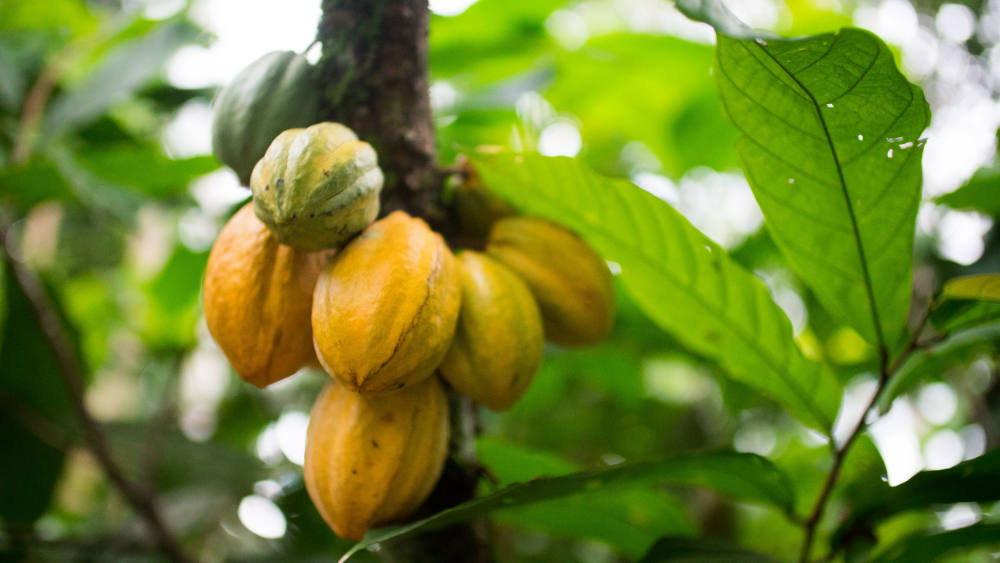
Ernst translated that observation into the management of an agricultural system. When working with species such as cocoa, which co-evolved with disturbances, the correct pruning becomes essential. It results in both good fructification and a great benefit to the entire system, thanks to the increase of biomass production. Unlike other agroforestry crops of cacao (shade-grown cacao), Ernst’s area is managed on all forest levels. The secret of its high productivity and quality in comparison to other producers of the region is not in the fertilization or irrigation (since it dispenses both). In addition to the usual care of the cacao trees, his production depends on the management and pruning of Erythrinas, jackfruit, banana and many other species that are present in the area.
- The systematic cutting and positioning of the pruned organic matter on the soil (never within), stimulates the action of organisms, speeding up the transformation.
- The pruned plants invest in new growth both in the aerial part (branches and leaves) as in their roots.
- The growth information also changes the biochemical composition of enzymes and hormones in the roots, which indirectly favors greater retention of water and nutrients.
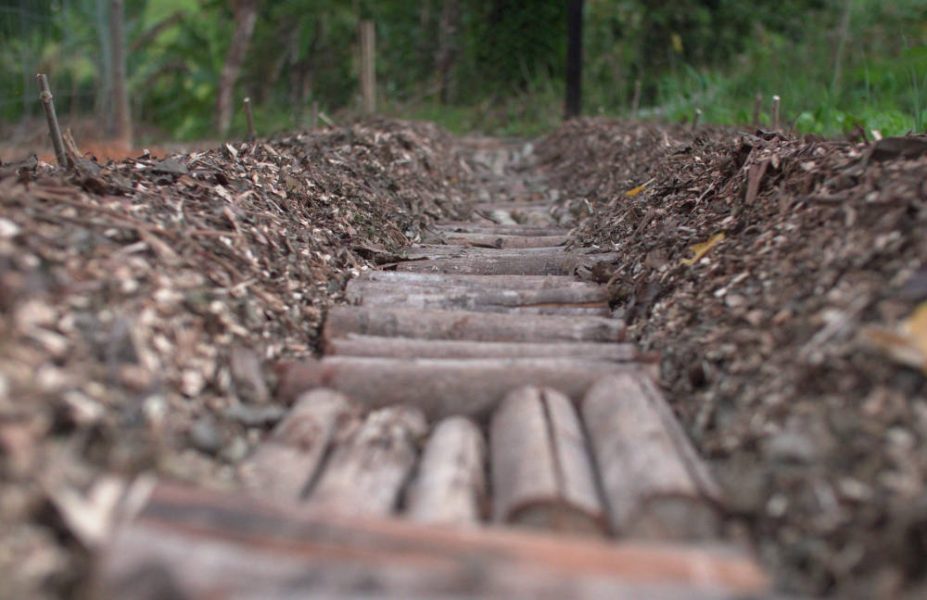
Pruning works as a fertilizer and as an irrigation system, but via processes rather than via inputs. This way, the farmer stops being a mere transporter of fertilizer and water and begins acting as a mediator between the vegetation and the soil, providing the latter with everything it needs to maintain the general health of the area.
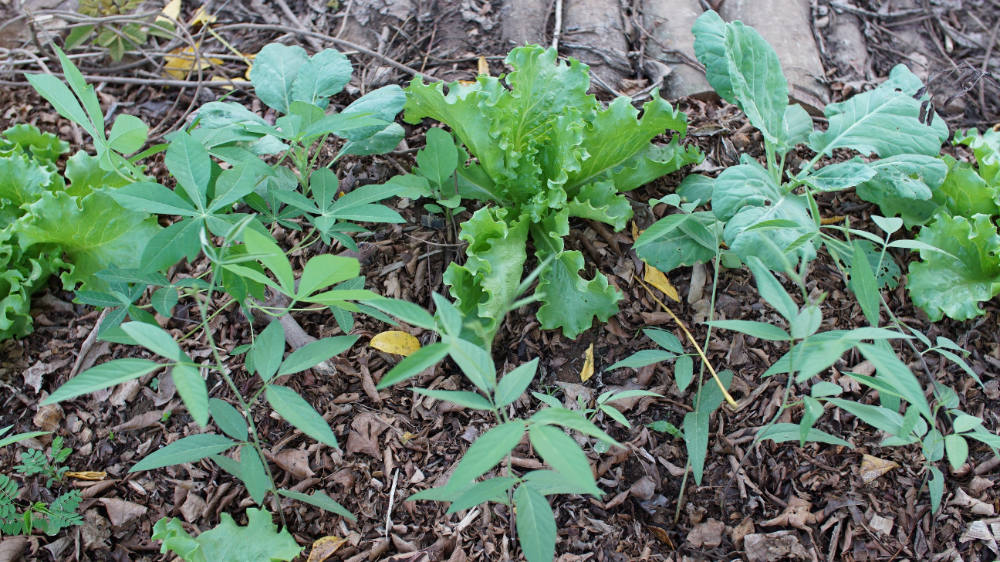
Below, the benefits of pruning in plant’s growth extracted from Joachim Milz publication (illustration in Portuguese only), of a consortia including corn, papaya and cacao.
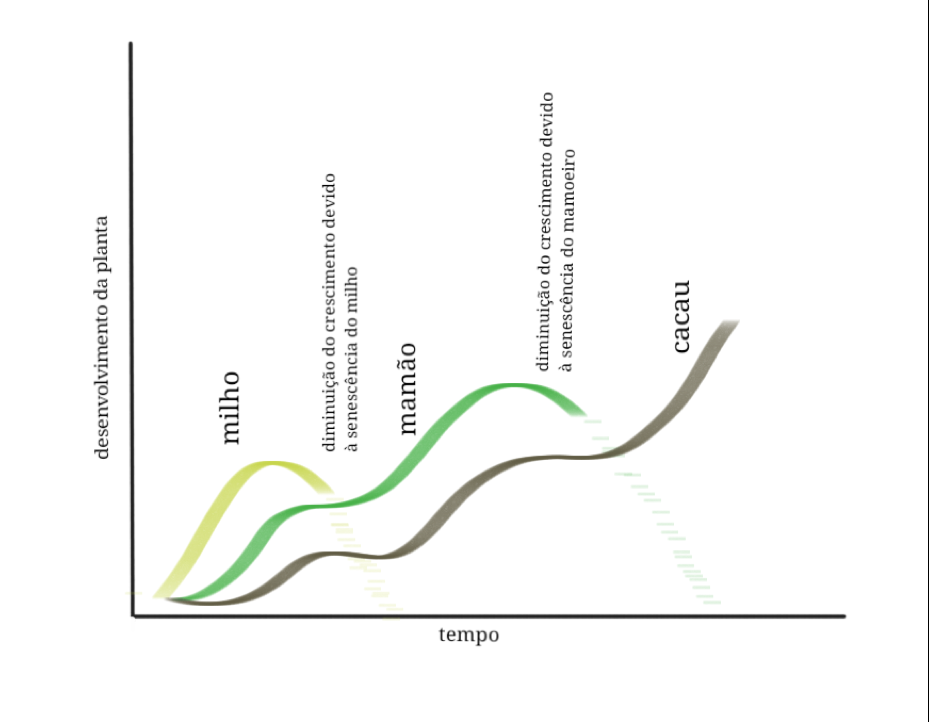
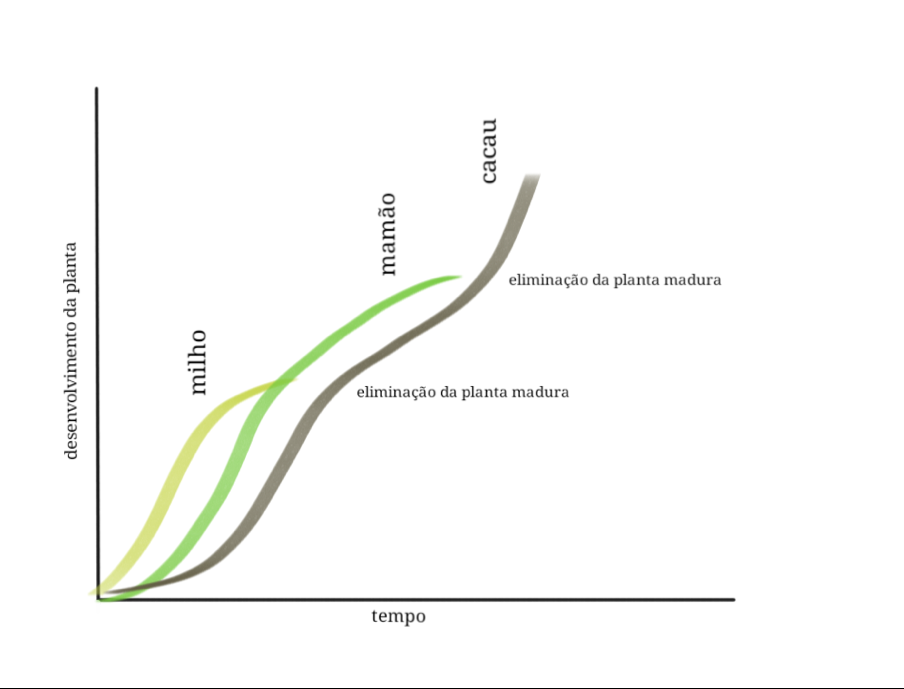
In any design, Ernst includes species that have a large capacity of biomass production so they can supply an amount of organic matter similar or higher than a natural environment, such as “Eucalyptus sp” and “Acacia mangium”, for example. As they naturally belong to ecosystems with little availability of water and nutrients, they adapt to poor and degraded soils of other biomes. The rapid metabolism of these plants allows the processing of large amounts of energy in a short period of time and in difficult soil conditions. For Ernst, if they were evaluated for the volume of biomass they can produce and for their impressive ability to withstand drastic pruning, they would not be categorized as villains of the environment. Syntropic farmers use them as a strategy of soil recovery so more demanding trees can establish themselves in the future.
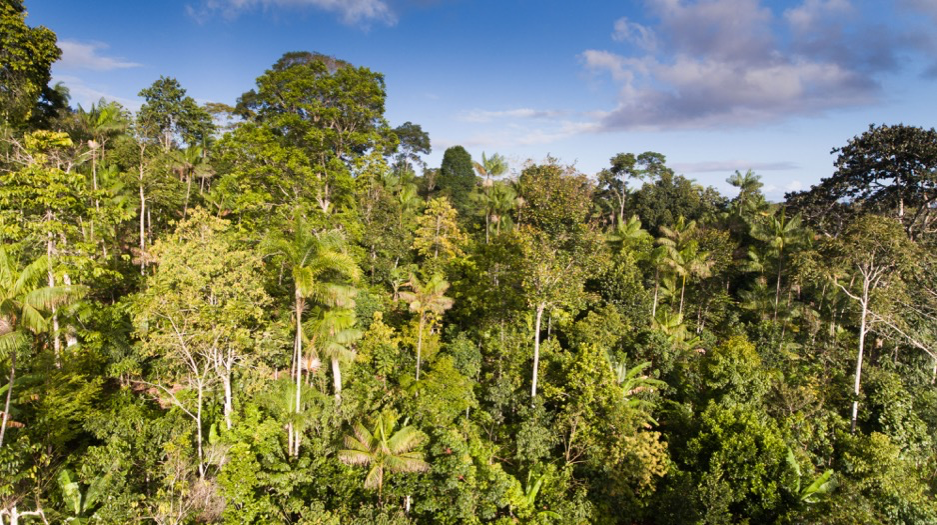
The “pulsing” of the system is when the farmer “holds” succession through drastic pruning of all individuals. This practice is used mainly by producers focused on short cycle species, such as vegetables (placenta I, II and III). Through pulsing, it is possible to repeat the crops in the vegetable beds two or three times (the placenta stage) until the other species of the next successional step (secondary I, II and III) are “allowed” to grow up. This technique is also used to synchronize species added at different moments or to enrich it with more diversity. Ernst Götsch always remembers that pulsing the same area many times is not recommended. An ecosystem has stages of growth to fulfill – placenta, secondary and climax – and keeping it in the stage of placenta promotes a forest “abortion”. The soil degrades by the interruption of the natural succession, requiring a start from scratch.
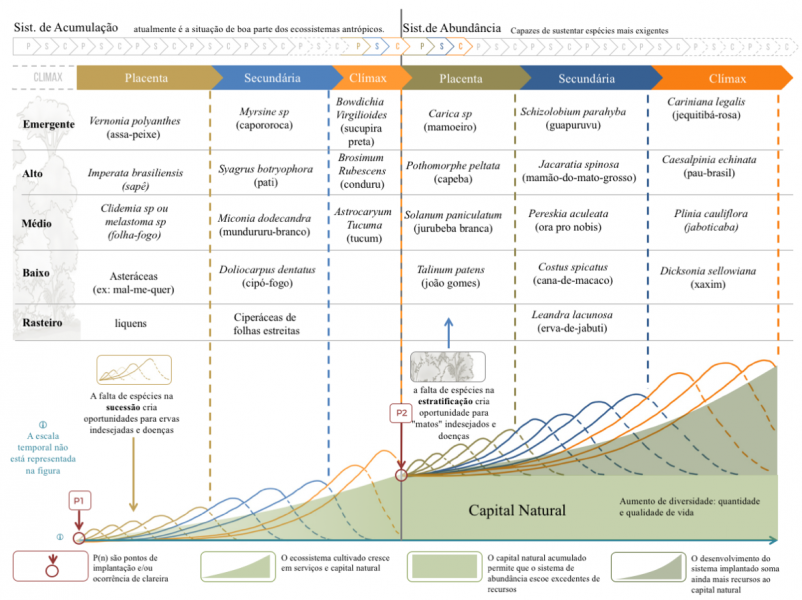
Above a table representing the natural succession of a Atlantic Rainforest area (in Portuguese only). Species list: Ernst Götsch. Illustration: Ursula Arztmann.
Additional information:
ANDRES, C.; COMOÉ, H.; BEERLI, A.; SCHNEIDER, M.; RIST, S.; JACOBI, J. “Cocoa in Monoculture and Dynamic Agroforestry”. In: Lichtfouse E. (eds) Sustainable Agriculture Reviews., v(19). Springer, 2016.
SCHNEIDER, M.; ANDRES, C.; TRUJILLO, G.; ALCON, F.; AMURRIO, P.; PEREZ, E.; MILZ, J. “Cocoa and Total System Yields of Organic and Conventional Agroforestry Vs. Monoculture Systems in a Long-Term Field Trial in Bolivia”. Experimental Agriculture, v.53(3), pp. 351–374, 2017.


